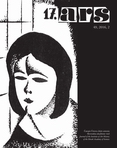
Journal ARS 49 (2016) 2
Bibiana POMFYOVÁ
Sacristies in the Middle Ages – Functions and Architectural Design (Case of Slovakia)
(Summary)
Now and again, the research of medieval sacral buildings has been confronted with the question, why there are remains of high-quality mural paintings, consecration crosses, altars and tabernacles in the sacristies of some churches, or why some sacristies are characterised by unusual construction forms. These cases don´t seem to correspond to our current perception of sacristies. Yet, they indicate that medieval sacristies were not service premises but also could have other purposes, which were almost forgotten and only gradually became a subject of systematic research. The paper is the first to summarise basic information on medieval sacristies in the territory of Slovakia. When identifying sacristies in construction units, one can only rarely rely on data in written sources. We are usually working on assumption that the sacristy was located near a choir. As for the territory of Slovakia, one can state that in the middle ages the northern side of the church was preferred. But it was definitely no rule. The location of sacristies varied, which makes their identification even more difficult. The older are the churches, the bigger are the doubts on which, if any, part of the church can be regarded as a sacristy. The earliest evidence of sacristies are related to the vanished church at Bratislava castle (turn of the 10th and 11th centuries) and the vanished Benedictine church in Krásna nad Hornádom (before 1143?). Since the 13th century there has been a considerable increase in the number of evidence of side rooms that can be interpreted as sacristies. Since the latter half of the 13th century the sacristies have become a commonplace in sacral architecture in rural environment. But it was not only the locations of sacristies that differed. The terminology and architectural form, which was related to their various purposes, varied too. Apart from the main function (storage of sacred objects used in the services, preparation for the services) and other, secondary functions (various depositories, archives, libraries, treasuries etc.), many sacristies were also sacral, the so-called sacristy chapels, as shows the discoveries of altars, consecration crosses, architectural forms, remains of painterly decoration, or other medieval furnishing of sacristies. Two-storey sacristies occurred quite frequently too. The functional use of the second floor is often only hypothetical, but it certainly varied too, which is also clear from different architectural solutions.